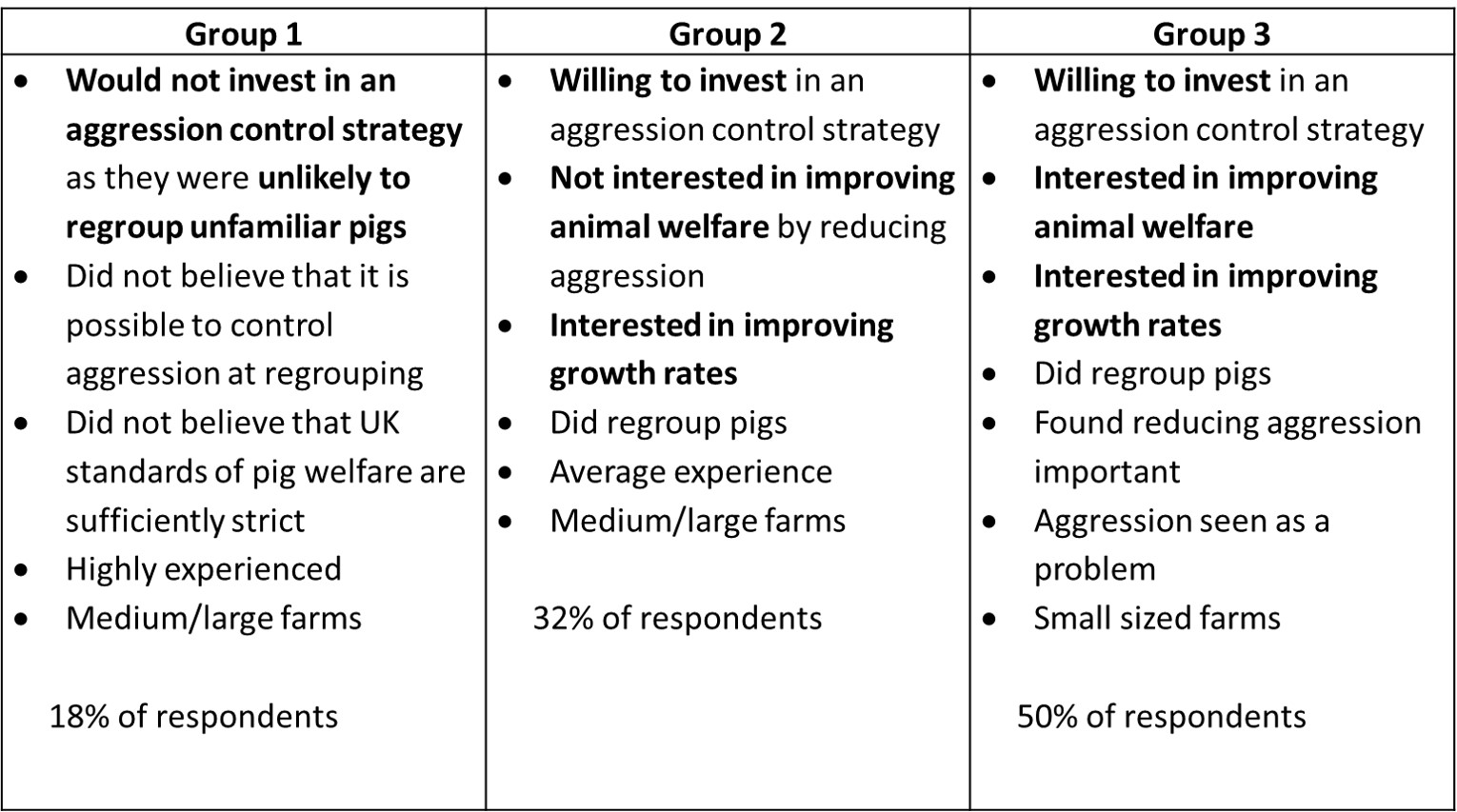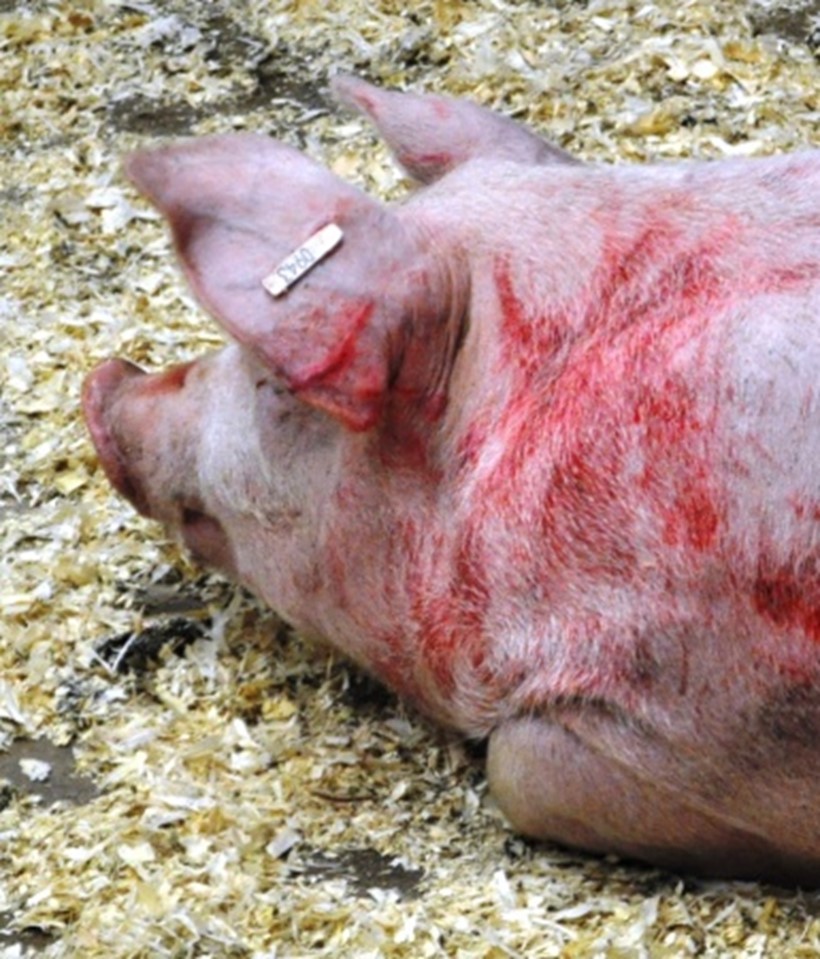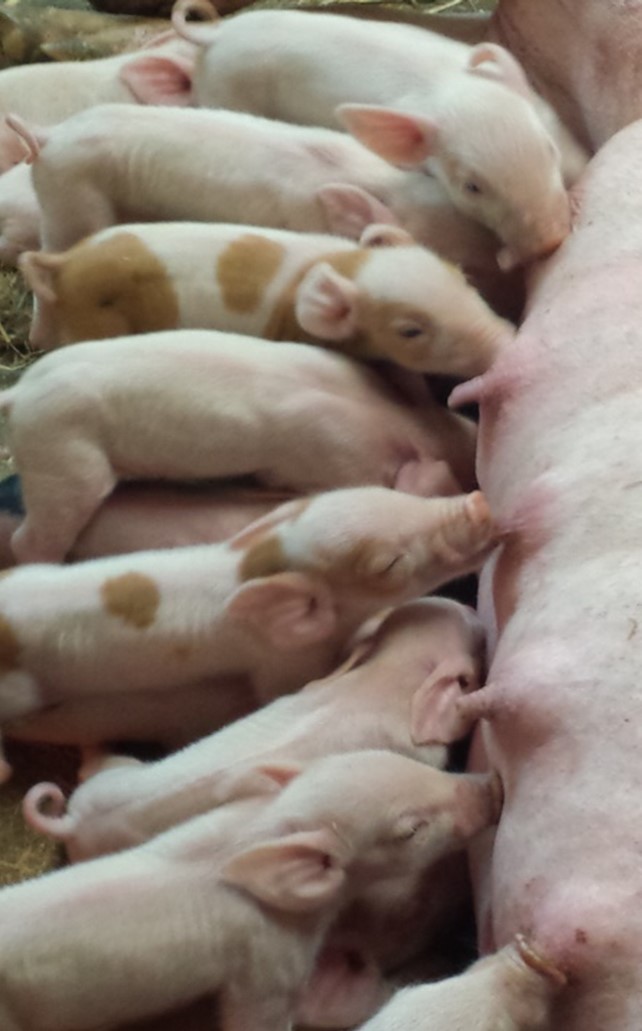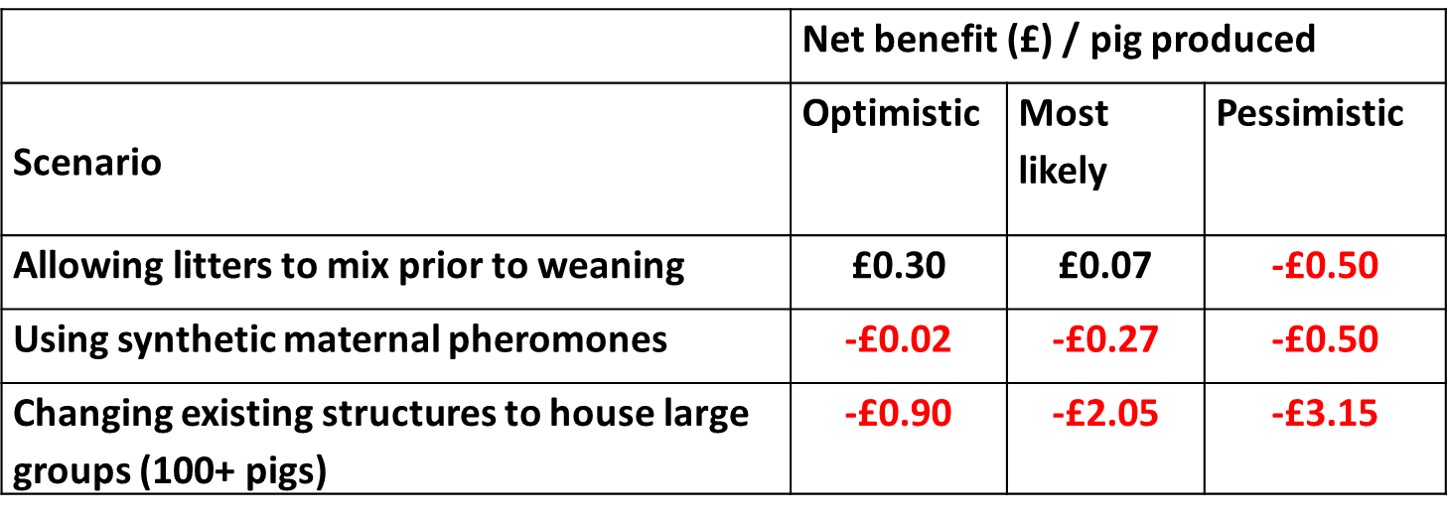



How to make efficient financial decisions for the future of your pig herd
What would you do if given the choice to invest or to not invest at all, in strategies to reduce aggression between pigs?What type of spender are you?
When it comes to financial decisions everyone is different. A recent study by researchers from Scotland’s Rural College investigated how farmers make business decisions on their farm. In this case the choice was given whether to invest, and how much, or to not invest at all, in strategies to reduce aggression between pigs. This would then improve productivity and animal welfare. It turns out that there were three types of “spenders”: the ones choosing to not invest (partly because they did not consider aggression as a problem), the ones oriented by business goals, and the ones motivated by both business and animal welfare goals. Table 1 shows that 50 percent of the 82 surveyed UK and Irish farm managers fell in the third category. They were the only group willing to pay to reduce aggression. Specifically, they were willing to pay an additional £0.77 per pig produced for a realistic reduction in aggression of 25 percent.

Priorities and characteristics of groups of UK and Irish pig farmers (82 in total), when making financial decisions about strategies to reduce aggression between pigs. © Rachel S. E. Peden
"Tip 1. Before even starting with calculating costs, it is good to recognise what goals should be reached with the investment: only financial returns through increased productivity? Or also increased work satisfaction through improved animal welfare?"
--
The costs and benefits
In order to pursue progress, initial investment costs may be required to purchase and fit new materials, or to restructure accommodation. Increased running costs may result from extra labour requirements and the replenishment of materials, and may thus affect variable costs. Implementation of a strategy in practice may require: A) only investment costs, B) only running costs, or C) a combination of both. It is important to trade off estimates of these costs with the benefits when deciding whether to implement a change. Cost-benefit analysis is a popular tool used for weighing up benefits and the associated costs of an intervention in order to decide whether or not to go ahead. Hereby the monetary costs are subtracted from the monetary benefits. An example of this is demonstrated in The profits of good mothers.

Skin lesions due to fighting can be a route of infection for diseases and the energy spent on fighting comes at the cost of energy available for growth. © Marianne Farish
Cost-benefit analysis of reducing aggression
Aggression at regrouping affects animal welfare and productivity through (skin) injuries and stress which can slow growth rates (photo 1). Cost-benefit analysis of three of the most effective aggression control strategies was conducted in order to establish their monetary consequences.
Strategy 1. Allowing litters to co-mingle prior to weaning (early life socialisation)
This provides piglets the opportunity to learn social skills which reduces their aggressive behaviour later in life. Socialisation can be achieved by removing barriers between adjacent farrowing pens when litters are about two weeks old.

Pig’s communication is partly through smell and the pheromones related to the sow’s udder, from which the pig appeasing pheromone originates, calms pigs down. © Rachel S. E. Peden
Strategy 2. Synthetic maternal pheromones (Pig Appeasing Pheromone)
Exposing pigs to synthetic maternal pheromones mimics natural pheromones secreted by the sow, and has a calming effect on pigs (Photo 2). This may reduce both aggression and tail biting, and some report a better growth rate. The products are commercially available.
Strategy 3. Housing pigs in large social groups (100+ pigs)
This causes pigs to adopt a less aggressive, and more cost efficient, social strategy due to the higher number of potential competitors. Smaller pens can be enlarged by removing/restructuring pen walls.
The monetary costs and benefits of each intervention were estimated by reviewing the academic and industry literature, and through the input of 16 cases from practice. All costs were calculated to reflect the cost ‘per pig produced’. Costs were considered under the ‘most likely’, ‘optimistic’ and ‘pessimistic’ scenarios, in order to reflect the variation in outcomes due to unexpected circumstances. Allowing litters to mix at two weeks of age was the only strategy that resulted in a financial benefit (Table 2).

The results of cost-benefit analyses of each strategy, under the most likely, optimistic and pessimistic scenario. © Rachel S. E. Peden
"Tip 2. When calculating costs and benefits, take into account that the outcomes may vary. Therefore be optimistic about making changes, but certainly also pessimistic when it comes to financial estimations."
--
Summing up the choices
Allowing litters to socialise prior to weaning had small economic costs which were mainly determined by the labour requirements. These costs were outweighed by their benefits, therefore profitability was improved. The costs of using pheromones were determined by the purchase price of pheromone diffusers and the labour requirements of their installation. So far, there is no evidence yet that the costs outweighed the financial benefits. However, the costs were small and are within the margin that group 3 (Table 1) was willing to pay to improve welfare. Housing pigs in large groups was associated with high economic costs, mainly determined by reduced growth performance in large social groups and the costs of restructuring pens. When building new units, however, large pens would give substantial savings in construction costs and may in that case well outweigh the costs.
"Tip 3. Financial benefits of a novel implementation will depend on the current farm situation, in particular building design and available labour, as well as other investments that may be planned for the future."
--
| References | ||||
|---|---|---|---|---|
| Rachel S. E. Peden , Faical Akaichi, Irene Camerlink, Laura A. Boyle, Simon P. Turner | ||||
| (2019) | Pig farmers’ willingness to pay for management strategies to reduce aggression between pigs. PLoS ONE | 14(11) |









